UK annual house price growth slowed modestly to 10.7% in June, from 11.2% in May.
Prices rose by 0.3% month-on-month, after taking account of seasonal effects, the 11th consecutive monthly increase.
The price of a typical UK home climbed to a new record high of £271,613, with average prices increasing by over £26,000 in the past year.
There are tentative signs of a slowdown, with the number of mortgages approved for house purchases falling back towards pre-pandemic levels in April and surveyors reporting some softening in new buyer enquiries.
Nevertheless, the housing market has retained a surprising amount of momentum given the mounting pressure on household budgets from high inflation, which has already driven consumer confidence to a record low.
Part of the resilience is likely to reflect the current strength of the labour market, where the number of job vacancies has exceeded the number of unemployed people in recent months.
Furthermore, the unemployment rate remains close to 50-year lows.
At the same time, the stock of homes on the market has remained low, which has helped to keep upward pressure on house prices.
The market is expected to slow further as pressure on household finances intensifies in the coming quarters, with inflation expected to reach double digits towards the end of the year.
Moreover, the Bank of England is widely expected to raise interest rates further, which will also exert a cooling impact on the market if this feeds through to mortgage rates, commented Robert Gardner, Nationwide’s Chief Economist.
| Headlines | Jun-22 | May-22 |
|---|---|---|
| Monthly Index* | 537.9 | 536.5 |
| Monthly Change* | 0.3% | 0.9% |
| Annual Change | 10.7% | 11.2% |
| Average Price(not seasonally adjusted) | £271,613 | £269,914 |
Most regions see slight slowing in price growth
The Nationwide regional house price indices are produced quarterly, with data for Q2 (the three months to June) showing a softening in annual house price growth in nine of the UK’s 13 regions.
The South West overtook Wales as the strongest performing region in Q2, with house prices up 14.7% year-on-year, a slight increase from the previous quarter.
This was closely followed by East Anglia, where annual price growth remained at 14.2%.
Wales saw a slowing in annual price growth to 13.4%, from 15.3% in the first quarter.
Price growth in Northern Ireland was similar to last quarter at 11.0%. Meanwhile, Scotland saw a 9.5% year-on-year rise in house prices.
There was a slowing in annual house price growth in England to 10.7%, from 11.6% in the previous quarter.
While the South West was the strongest performing region, overall southern England saw weaker growth than northern England, Gardener continued.
Within northern England, the North West was the strongest performing region, with price growth picking up to 13.3% year-on-year, from 12.4% in the first quarter.
London remained the weakest performing UK region, with annual price growth slowing to 6.0%, from 7.4% in the previous quarter.
South West strongest performing region through the pandemic
Looking at house price growth since the onset of the pandemic, we see a similar pattern, with London also the weakest performing region.
Since 2020 Q1, average house prices in the capital have increased by 14.9%, whilst all other regions, except the Outer Metropolitan, have seen at least a 20% uplift.
The South West was also the strongest region over this period, with a 27.7% increase, after taking account of seasonal effects, followed by Wales, where average prices rose 26.2%.
Meanwhile in the North West, prices were up 25.8%.
These trends may reflect a shift in housing preferences; the Nationwide housing market surveys have pointed to the majority of people looking to move to less urban areas.
Research has found that predominantly rural areas have seen stronger price growth in recent years than predominately urban areas.
Strong house price growth has also been seen in a number of areas closely associated with tourism, including parts of Devon, South Wales, the Cotswolds and the Broads.
This suggests some of the demand may be being driven by those buying holiday or second homes, Gardener concluded.
Tom Bill, Head of UK Residential Research at Knight Frank, said:
“The rate of inflation is fast catching up with UK house price growth, which stubbornly remains in double digits.
How can house prices rise to such an extent during a cost-of-living squeeze? The answer is that they are both increasing largely for the same reason – a supply chain disruption.
Property listings are rising as more sellers sense the market is peaking, but it will take time to filter through to prices.
We expect UK prices to end the year at 8% before calming down further in 2023 as supply and demand rebalance and higher mortgage rates increasingly put the brakes on exceptionally high levels of demand.”
Jeremy Leaf, north London estate agent and a former RICS residential chairman, says:
“Even though prices are not rising quite as rapidly as they have been, property market resilience continues to defy the laws of economic gravity.
We are finding that activity is more determined by lack of choice than recent cost-of-living and interest rate rises.
There is no question that increasingly-stretched affordability is holding back some, as well as slowing house price growth and the number of transactions.
But there is still demand for correctly-priced properties, underpinned by low unemployment and a race for space which is still not satisfied.”
Tomer Aboody, director of property lender MT Finance, says:
“With interest rates rising along with inflation, a slowdown in growth is not surprising.
However, there is still evidence of confidence in the market due to the desire to buy and take advantage of mortgage rates before they increase further.
The south west saw the biggest increase in prices due partly to comparatively lower values to start with but also down to the extra space which house buyers are able to buy in these locations compared with London.
The capital remains the most expensive part of the country in which to buy property, which is why it is seeing the slowest growth due to problems with affordability and relative lack of buyers able to buy.”
Angus Dixon, director of private clients at property consultants INHOUS, says:
“There is still a real lack of stock, which is driving growth in prices.
It will be interesting to see how this pans out over the summer with overseas travel back in vogue, rather than staycations; will it impact demand during July and August, and what will that do to pricing?
The outlook remains relatively bullish as the fundamentals of the wider UK economy and the London market still ring true, even though there are macro-economic headwinds which may halt buyers slightly, rather than completely put them off.
There are people who have to move, whether that’s to upsize of downsize, and they are undeterred.
We have seen a couple of clients move to cash purchases to avoid interest rate fluctuations because they have the ability to do so.
For the majority buying in prime or super-prime London, a few rate hikes will not impact them too much, proving to be more of a speed bump than a roadblock.”
Mark Harris, chief executive of mortgage broker SPF Private Clients, says:
“While some of the heat has come out of the market as we approach the traditionally quieter summer months, there are still plenty of people keen to move although rising interest rates may temper the ambitions of some as to what they can afford.
What has changed for all borrowers is the rate environment – gone are the sub-1 per cent deals available nine months ago.
Now, mortgage products are in the 3 to 4 per cent range depending on their length and loan-to-value.
These rates available today reflect not only the increase in cost of funds but also lenders’ desire to moderate volumes, with many of the high street banks still sitting on large balances or even cheap Bank of England funds.
Specialist lenders are repricing upwards and/or streamlining their product ranges, meaning borrowers need to move quickly to secure rates.”
Brean Horne, personal finance expert, at NerdWallet said:
“The pandemic could not curtail the upward march of house prices, but many expect that rising interest rates and inflation will. However, today’s figures show that this slowdown is yet to take effect.
It’ll come as a blow to those hoping to take their first step onto the property ladder, who are facing a triple-threat.
Interest rates are rising, affecting the amount they can borrow; inflation has risen above 9% and could reach as high as 14% later this year, impacting the amount they can save; and if house prices also climb further, many properties will simply be out of reach.
So, with prices remaining resilient, people wanting to purchase a property must be pragmatic in their approach.
It is vital they first take stock of all financial aspects of their lives, including personal savings, credit scores and future income, before making any major decisions.
Further, prospective homebuyers will need to consider potential mortgage deals carefully, seeking out the best options in terms of the rates and loan-to-value offers available.
These are uncertain times for homeowners and homebuyers alike.
Despite predictions of the market cooling, it’s not going to happen overnight.
However, being proactive and exploring the various options available to them will be a good starting point.
In doing so, they will likely feel more in control of their options and better positioned to act if house prices do start to decline in the months to come.”
Simon Gerrard, Managing Director of Martyn Gerrard, commented:
“Whilst there is nothing new about the seasonal summer slowdown, this year the housing market must also contend with a cost of living crisis, soaring inflation and an upward creep in mortgage rates.
However despite these obvious challenges, house prices will remain high as buyers fight tooth and nail to secure the best homes in a chronically under-supplied market.
But on the ground it is the second steppers who are struggling most as they seek to move up the ladder amid near-unprecedented competition for property.
Make no mistake, alarm bells should be ringing within government over this housing supply crisis.
The only viable solution to make the market more accessible is an urgent relaxation of planning laws to help stimulate supply across the country.”
Director of Henry Dannell, Geoff Garrett, commented:
“There’s no doubt that increasing interest rates have dampened buyer appetites during the second quarter of this year and this is starting to show in the form of a more modest rate of house price growth.
Despite this tightening of the belt, a robust level of market activity coupled with ongoing stock shortages has seen house prices continue on their upward trajectory to hit record highs.
While property price performance is impressive given the wider economic backdrop, we expect this trend to subside in the relative short term, with some adjustments likely to materialise throughout the remainder of the year in the form of a reduction in property values.”
Managing Director of HBB Solutions, Chris Hodgkinson, commented:
“There’s no doubt that the property market has performed impressively during the pandemic but this rate of growth simply isn’t sustainable in the long-term and we’re now seeing early signs that the winds of change are beginning to pick up.
We’ve already seen mortgage approval levels start to slide and the lagged nature of the transaction process means that it won’t be long before this materialises in the form of both a reduction in transactions and the price paid in the process.”
Director of Benham and Reeves, Marc von Grundherr, commented:
“We’re yet to see any notable decline in the rate of house price growth across the UK market and, despite a serious strain on household finances causing consumer confidence to plummet, these stronger economic headwinds are yet to blow the house down.
In fact, UK bricks and mortar is far from a house of cards ready to topple at the first sign of uncertainty and we’ve seen a royal flush of house price growth continue to sweep across all regions of the market.
London remains the jewel in the crown where outright property values are concerned and even though the capital has seen the lowest rate of growth of all UK regions, a six per cent jump is still considerable when you consider the pounds and pence return that homeowners have enjoyed over the last year.”
James Forrester, Managing Director of Barrows and Forrester, commented:
“We’ve come accustomed to some quite remarkable rates of house price growth during the pandemic property market boom and while this has been replaced by more incremental growth rates in 2022, an 11th consecutive month to month increase demonstrates an extremely resilient market.”





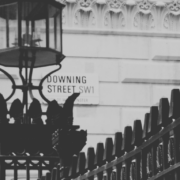
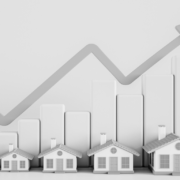

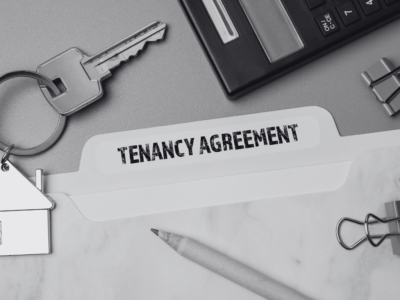
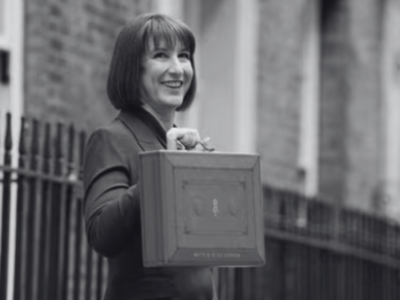




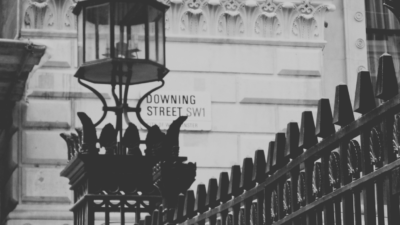
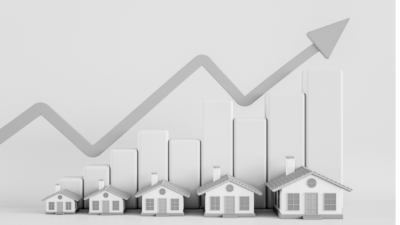
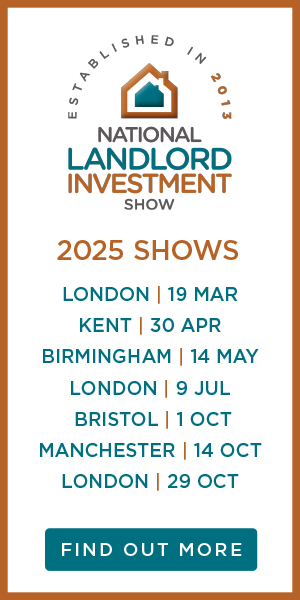




Comments